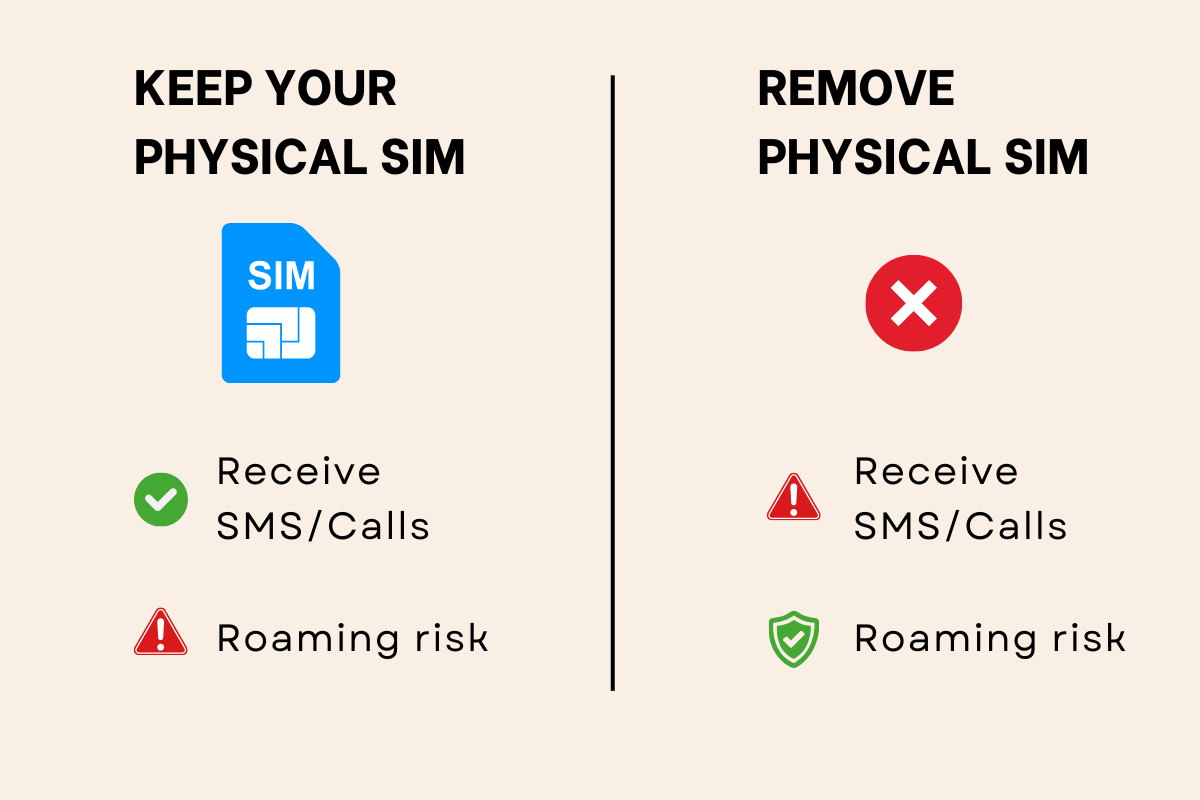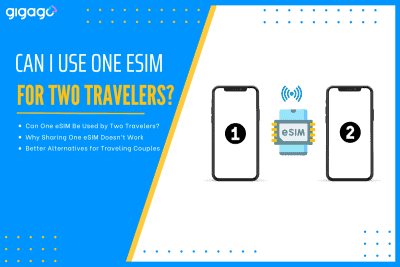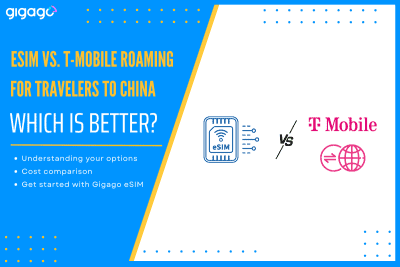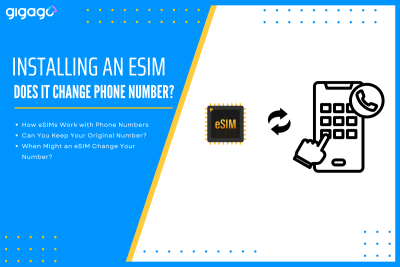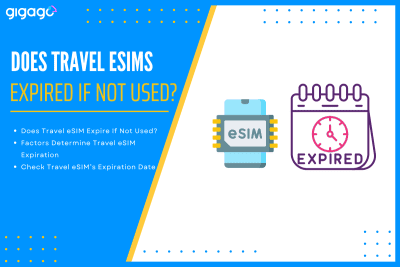When couples or friends travel together, it’s common to look for ways to save on mobile data. One question often comes up: “Can two travelers use the same eSIM?” The short answer is no – one eSIM cannot be used by two different travelers on two separate devices. However, there are practical alternatives that can […]
Should you remove your physical SIM when using an eSIM abroad?
When traveling internationally with an eSIM, one of the most common questions travelers face is whether they should remove their physical SIM card. This decision can significantly impact your connectivity, costs, and overall travel experience.
Understanding the relationship between physical SIMs and eSIMs is crucial for making an informed choice. The answer isn’t always straightforward and depends on your specific needs, device capabilities, and travel circumstances. This article on “Should you remove your physical SIM when using an eSIM abroad?” will help you understand clearly about this topic.
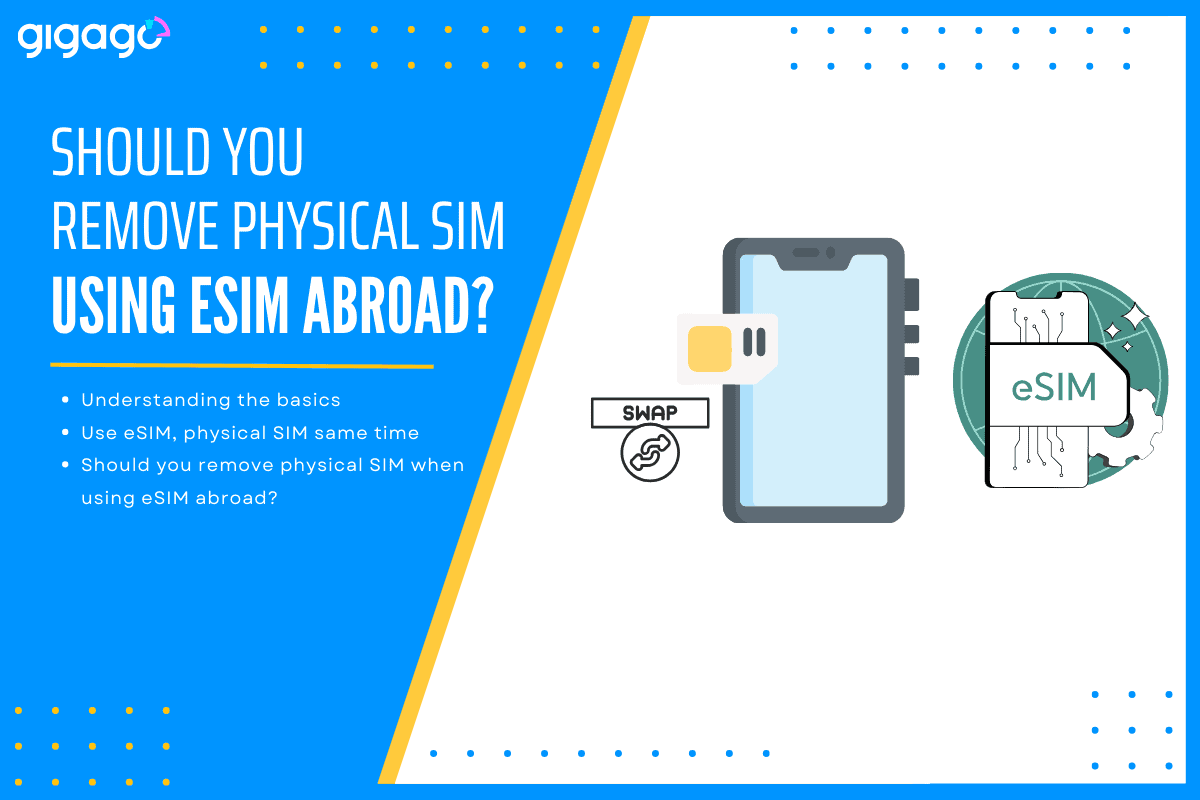
In this article
I. Understanding the basics – Physical SIM and eSIM
Before deciding whether to remove your physical SIM, it is essential to understand how both SIM types work and how they can coexist on your device.
1. What is a physical SIM card?
A physical SIM card is a small plastic chip inserted into your phone to connect it to your mobile network. It stores your phone number and carrier information, and it is what most of us have used for years to make calls, send texts, and use data.
2. What is an eSIM?
An eSIM (embedded SIM) is a digital version of a traditional SIM card that is built directly into your device. Instead of inserting a physical card, you download a digital profile via QR code or app that contains the same network information as a physical SIM.
An eSIM is ideal for travelers who want to avoid buying local SIM cards abroad.
3. Understanding dual SIM functionality
Many modern smartphones (like recent iPhones and Androids) support dual SIM functionality, allowing you to use both a physical SIM and an eSIM at the same time.
- Each SIM is treated as a separate line with its own number and plan.
- You can assign which SIM handles data, calls and texts.
This setup is ideal for travelers who want to keep their home number active while using an eSIM for local data.
II. Can you use eSIM and physical SIM at the same time?
Yes, most modern smartphones can operate both a physical SIM and an eSIM active simultaneously (dual SIM active).
When both SIMs are active:
- Your phone will display both carrier names in the status bar.
- You can receive calls and texts on both numbers.
- You can choose which SIM is used for mobile data, calls and SMS.
✅ Note: To avoid unexpected roaming charges, you should assign the eSIM as your primary data line and disable data roaming on your physical SIM.
III. Should you remove your physical SIM when using an eSIM abroad?
The decision depends on how you plan to use your phone while traveling. Let’s look at the reasons for keeping or removing your physical SIM when using an eSIM abroad.
1. Reasons to Keep Your Physical SIM
- Access to Two-Factor Authentication (2FA): Many banks, email, and social media accounts send verification codes via SMS. Without your physical SIM, you may be locked out of key services.
- Stay Reachable on Your Primary Number: Receive important calls or texts from family, work, or your bank. Even if you don’t answer, you’ll know who called.
- Seamless Return Home: No need to reinsert or find your SIM card after your trip. Just switch settings back to your home line.
- Backup Connectivity: If your eSIM has issues (e.g., no signal), you can still use emergency roaming on your physical SIM.
2. Reasons to Remove Your Physical SIM
- Avoid accidental roaming charges: Even with careful settings management, there’s always a possibility of unintended network connections that result in unexpected fees.
- Improving battery life: Your phone won’t have to maintain connections with two networks at once.
- Simplifying network management: With only one active SIM (eSIM), there’s less confusion about which line is being used for calls, texts, or data.
- Enhanced privacy: Useful in high-surveillance regions or when concerned about SIM cloning or tracking.
IV. How to Properly Manage Both SIMs
If you choose to keep your physical SIM installed, here’s how to configure your device for safety:
- Turn off data roaming for your physical SIM in your device settings and keep the SIM active for calls and texts.
- Configure your eSIM as the primary data line in settings.
- Label your SIMs (e.g., “Home” and “Gigago travel data”) for easy management.
- Monitor your usage regularly through your carrier apps and device settings
- Use eSIM for all data-intensive activities like maps, email, and streaming.
For worry-free international travel, consider Gigago, a leading eSIM provider that supports over 200 countries. Gigago offers transparent pricing, easy activation via QR code, excellent global coverage, fast, reliable data speeds and plans tailored for different tourists’ needs — making it a smart choice for international connectivity.
► Explore affordable and flexible plans at Gigago’s eSIM store.
V. Conclusion
The decision to remove your physical SIM when using an eSIM abroad depends on your individual priorities regarding convenience, cost control, and communication needs.
- Keep it in if you want access to your home number, 2FA, and backup options.
- Take it out if you want complete peace of mind from unexpected roaming charges.
With the proper choice and right setup, you can travel smarter, stay connected, and avoid unnecessary costs.
